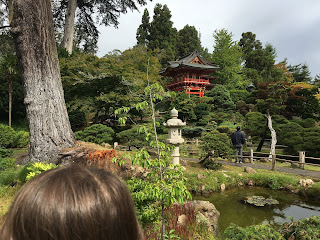 |
| Postcards from San Fran |
The Presidio region at the northwest corner of San Fran is one of the more fascinating gems of the city. An area that might easily be overlooked by visitors to the city, it shows up in guidebooks as the most common green area for locals to hang out, enjoy the long stretch of beach which offers a close and clear view of Alcatraz to the east and the sparkling Golden Gate to the west. Although originally cleared in
1776 by Spain as a fortress, it had changed hands to Mexico and eventually the U.S. Military in the mid 1800's, leaving behind the mammoth Fort Point, barracks, and hidden bunkers; but that had since
become the possession of the U.S. National Park Service. It's little surprise then that a Disney Museum surfaced here in celebration of its near Disney World appeal – a mixing of historical buildings and panorama that looks similar to a hollywood studio set-up. Miles of beautiful trails line both the old and new sections; walk up the hill through a well tended military cemetery; walk down along the flats past vast stretches of green fields; back toward the Golden Gate, through the fort, or upwards onto the bridge itself, traveled by both bike and foot.
Once out onto the bridge itself, all of the Presidio, Alcatraz, the cityscape behind and the rolling Californian hills on the other side are visible – the bridge becomes its own national park.

















































